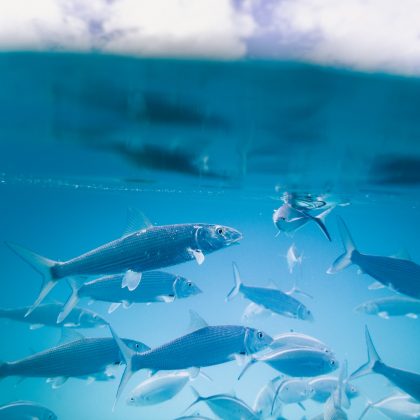An Ancient Wine Press at Knossos
The basic process of winemaking has involved three steps: harvesting grapes; pressing the grapes in order to release their juice; fermenting that juice into wine. While there are myriad variants in the winemaking process today, these core elements of wine production have been with us for around 8,000 years.
Our understanding of ancient wine production comes to us through a combination of archaeological remains, such as clay vessels associated with wine, ancient art, such as the fresco from the Tomb of Nahat Beni-Amon (Egypt), and ancient written evidence from authors such as the Roman-era agronomist Columella.
The remains of ancient wine pressing installations can be found throughout the Mediterranean, Caucasus and Middle East regions. One particularly clear example of an ancient wine press from the later 2nd century BCE survives from the city of Knossos on the island of Crete. Although these remains have only recently been studied, the press complex was excavated, recorded and reburied by archaeologists in 1977. The remains of this installation include a treading floor for pressing grapes, a large plaster-lined tank for holding grape juice and probably for the initial stage of fermentation. A row of partially buried clay fermentation vessels in a room adjacent to the press facility presents us with evidence of a wine cellar. Wine cellars for fermentation are well-known from Roman imperial-era archaeological contexts such as at the Villa della Pisanella, Boscoreale (Italy), but the Knossos cellar presents us with a rare, possibly unique, example from a Hellenistic (323-30 BCE) Greek context.
The tank from this wine press had a capacity of approximately 1400 litres, could have been used between seven and nine times over a pressing season, resulting in a maximum annual production of approximately 9800-12,600 litres of wine. Wine was consumed very regularly by ancient people, it was used as a drink, but also in cooking and even as an ingredient in medicines. Based on estimates by A. Tchernia (1986) for how much wine ancient Romans may have consumed, the Knossos press would have produced enough wine for 54-180 adults per year, or enough wine to fill approximately 400-500 clay vessels (amphorae) for shipping the wine overseas.
We will probably never know the taste of this wine from ancient Knossos, but we do have a few hints from ancient authors about Cretan wine more generally, which can help us to imagine its flavour and its perceived benefits. The Roman author Pliny wrote about the raisin-wine from Crete being the best of this type. We also find numerous references in the medical writings of Galen to sweet Cretan wine. From Hellenistic and Roman era Knossos, we also have a considerable number of ceramic beehive fragments that come from archaeological contexts which are associated with wine export (amphorae), so we may have some archaeological evidence that people in ancient Knossos may have been adding honey to sweeten their wine. We can, therefore, reasonably imagine that the wine from Knossos was to some degree, sweet. We also have an ancient medical text from the author Dioscorides that recommends Cretan wine (passum) as a cure for sore eyes and ears. It also recommends the same wine for expelling worms, for promoting fertility and for alleviating headaches, while cautioning that it is not good for the stomach.
The wine press complex from Knossos provides us with a unique window onto how this beverage was made at the site. We can only imagine the taste, and we can only question the wisdom of drinking sweet wine to cure a headache.


Read the associated research – THE LATE HELLENISTIC WINE PRESS EXCAVATIONS FROM KNOSSOS: THE EARLY IRON AGE, HELLENISTIC AND EARLY ROMAN CONTEXTS by Conor P. Trainor and published in the Annual of the British School at Athens – free to access until the end of November 2021.







How can I become a member of the site?
Hi there – you can sign up for a Cambridge Core account at http://www.cambridge.org/core